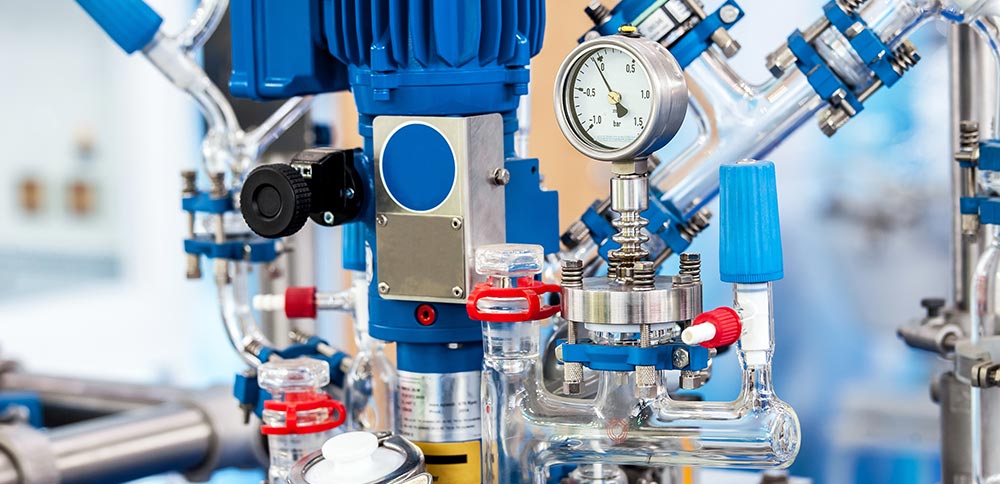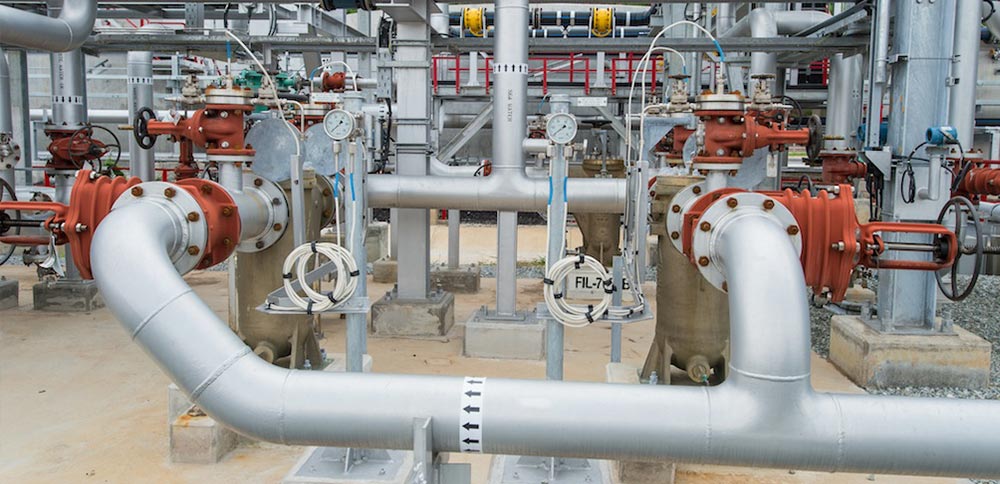Research at the CSE Institute
Infrastructure at the CSE
Test and measure under operating conditions !
Research in process and plant safety is not feasible without a fully developed infrastructure. The Center of Safety Excellence provides researchers at the Institute with numerous facilities to validate theoretical findings and simulation results in a practical manner – of modern sSPS systems via the Two-phase Loop to the ChemLab.
Infrastructure
SSPS Lab
Development laboratory for safety-related programmable logic controllers (sSPS)
Increasing automation opens up new possibilities for safeguarding process plants. Adaptive safety devices represent a great potential here. Innovative safety concepts are developed and extensively tested in the sSPS-Lab.
sSPS opens up new opportunities
A safety-related programmable logic controller (PLC) is a basic requirement for the applicability of adaptive safety devices. The sPLC is used to evaluate the incoming measurement data (Actio) from the process, and in the case of adaptive safety devices, compares the previously defined maximum permissible process limit value with the measured pressure and initiates countermeasures (Reactio) before it is exceeded. In the case of mechanical safety devices, this can be their opening or closing; in the case of PCE safety devices, it can be the initiation of countermeasures, for example, the increase of the cooling capacity in the event of a pressure increase due to a through-flow reaction.
Programming and validation of safety-related control systems
In the sSPS Lab of the CSE Institute, the control system for these adaptive safety devices can be programmed and validated. Building on this, new safety concepts can be developed. For this purpose, two SIMATIC PCS 7 and one HIMatrix F60 are available to the students and PhD candidates. Logic programming on the controllers can be done with the usual programming languages according to EN 61131, for example with structured text (ST), function block diagram (FBD), sequential function chart (STFC) and with sequential function chart (SFC). These programming languages are widely used in industry and enable structured, systematic and efficient programming of safety-related controls.
The sSPS Lab is an indispensable tool in the development of innovative safety concepts in our research projects!
Infrastructure
2-phase Flow loop
Examine gas/liquid mixtures? At the CSE large-scale test facility!
Valves and pipeline components can be tested on the gas/water two-phase test facility of the CSE Institute. Measurements are possible as standard up to pressures of 64 bar with air or nitrogen and with water – also as two-phase mixtures.
Overview of the 2-phase flow loop
At the CSE Institute, safety devices are researched and developed through which two-phase flows of gases and liquids pass. This is typical, for example, for emergency relief devices of pressurised apparatus and systems.
The 2-phase flow loop consists of a gas storage tank with a volume of approx. 30 m3 and a permissible pressure of 150 bar. The water is taken from a cistern with a volume of 110 m3 for the measurements. The water pump has a capacity of about 300 m3/h at a pressure of 25 bar. For tests with higher pressures, the pressure tanks of the High Pressure Loop are used.
High-precision nozzles and flowmeters
High-precision venturi nozzles with critical flow are available for mass flow measurements. This results in one of the most accurate power measurements with less than 0.2% deviation from the measured value. Coriolis flowmeters are also used.
Performance data:
- Media: air, nitrogen, water
- Water storage: 110 m3 at ambient pressure
- Gas storage: 60 m3 at 150 bar
- Pressure stage: up to 64 bar
- Temperature: Ambient temperature
Standard measurements:
- Capacities (volume flow, mass flow)
- Flow resistances (pressure drop)
- Characteristics (pressure opening)
- Strength (pressure surge)
- other tests
Fitting tests:
- Safety valves
- Bursting disks
- Control valves
- Dampers
- Orifices
- Nozzles
- other fittings
Infrastructure
Chem Lab
Evaluate hazardous substances and chemical reactions
Hazardous substances and dangerous chemical reactions must be assessed. This is the task of safety engineering. At the CSE Institute, new methods are being researched and developed for this. The Chem Lab is available to the researchers for this purpose.
Reaction calorimetric measurements of chemical reactions are becoming more and more accurate. Safety-related key figures can be derived from this. They are only meaningful if the results can be determined independently of the laboratory with high accuracy.

The standardisation of procedures and the harmonisation of methods are just as much research topics as the new development of further methods, for example in the field of micro-reaction calorimetry or in the use of very small amounts of substances.
The CSE Institute researches and develops in the field of chemical safety engineering. With the colleges and universities as well as the Fraunhofer ICT as cooperation partners, there are exceptional synergies for innovative protection concepts.



